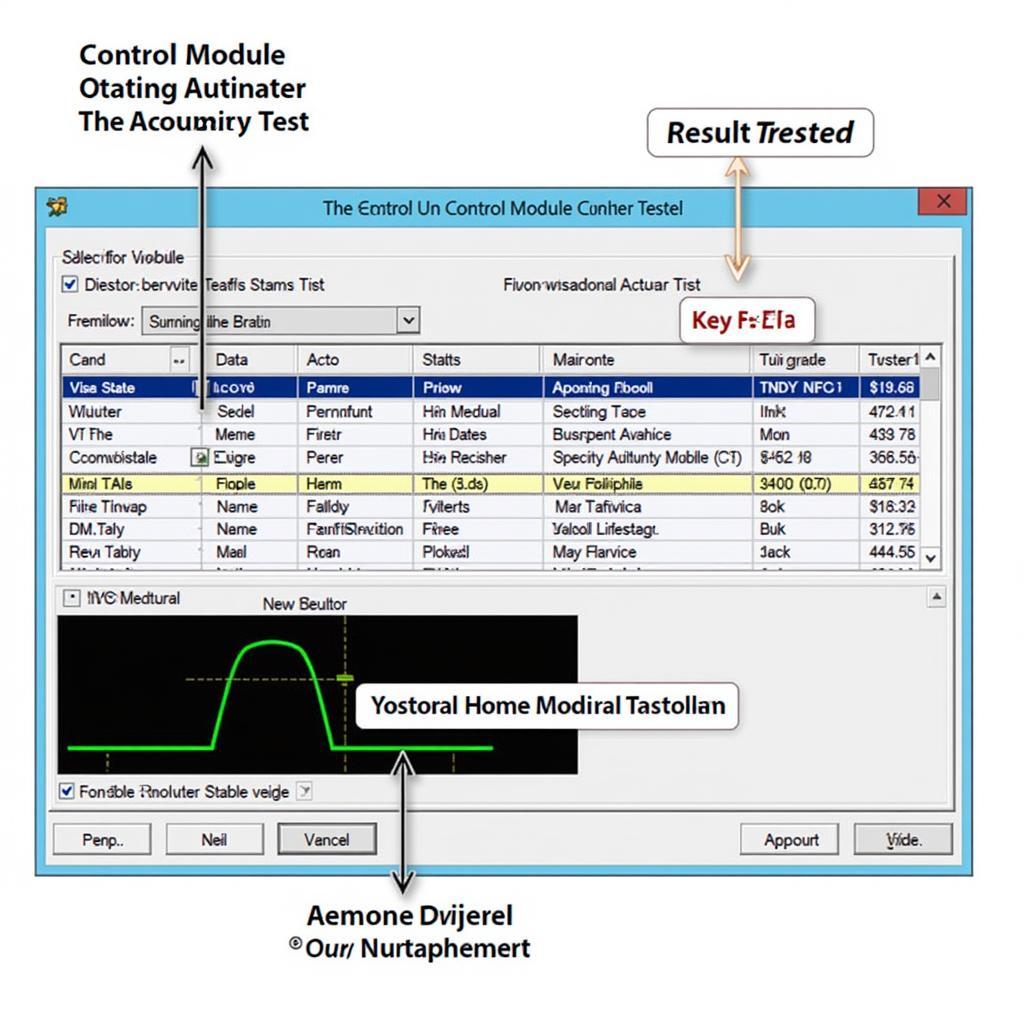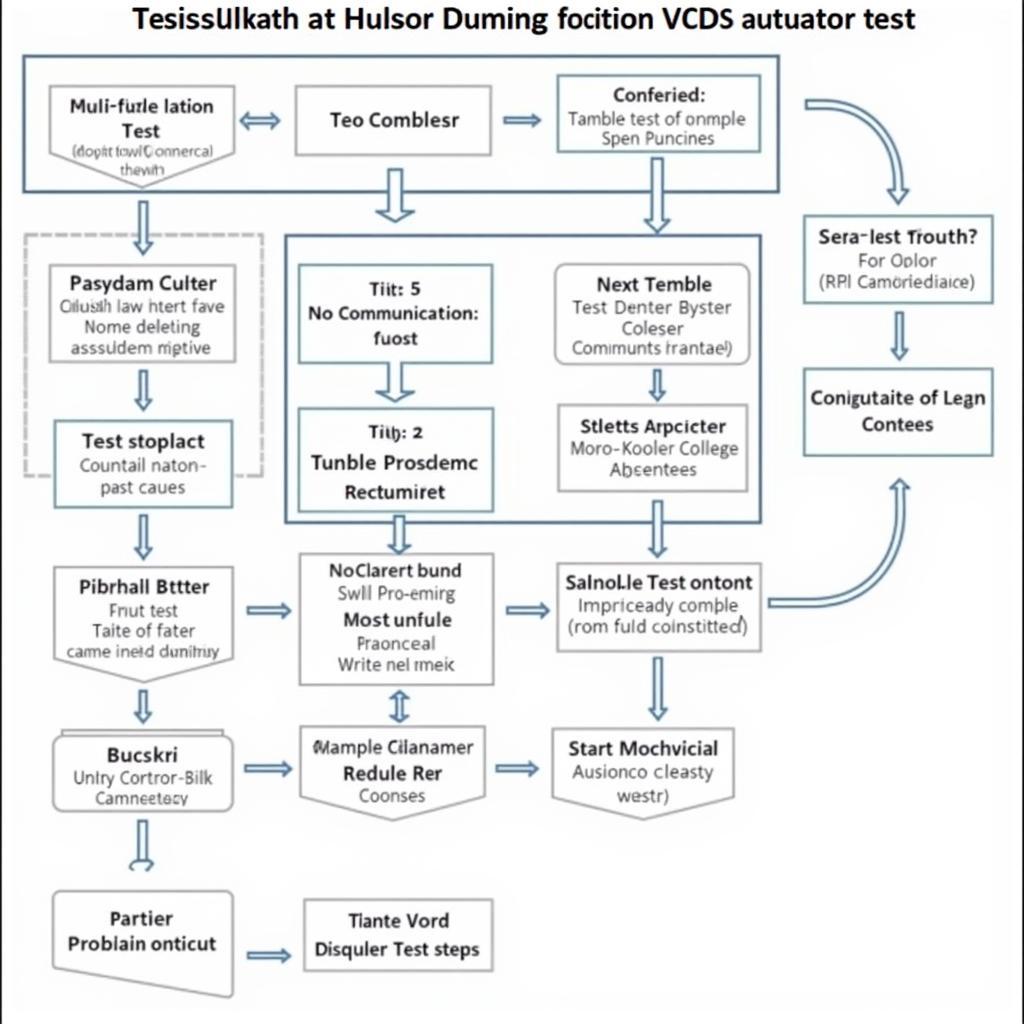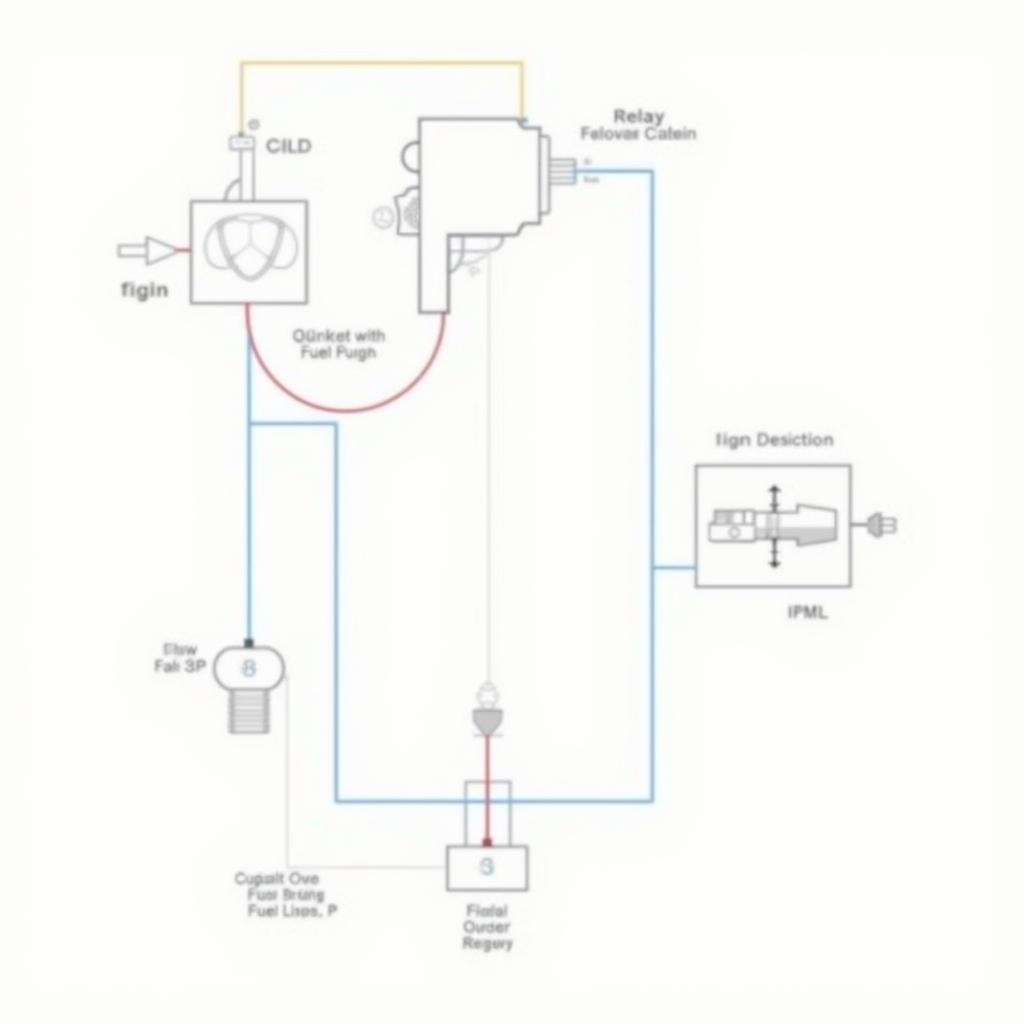The VCDS actuator test is a powerful diagnostic tool that allows you to pinpoint the root cause of various car problems. From faulty actuators to wiring issues, understanding this feature can save you time and money on repairs. This guide provides a comprehensive overview of the VCDS actuator test, its benefits, and how to use it effectively. We’ll explore everything from basic principles to advanced techniques.
If your car’s acting up, a VCDS actuator test can help you isolate the problem. Learn more about the what is a vcds tool.
What is a VCDS Actuator Test?
The VCDS actuator test lets you individually activate various components in your car’s systems. Think of it like a virtual mechanic that isolates and tests each part. This helps determine if a component is functioning correctly or needs replacing. It’s an essential tool for DIY mechanics and professional technicians alike. This test utilizes the VCDS 17.1 3 software to interact with your car’s control modules.
Why Use a VCDS Actuator Test?
A VCDS actuator test helps you quickly and efficiently diagnose issues. It avoids the guesswork and unnecessary replacement of parts. It offers a precise, targeted approach to troubleshooting.
How to Perform a VCDS Actuator Test
Performing a VCDS actuator test involves connecting the VCDS interface to your car’s OBD-II port, selecting the appropriate control module, and then choosing the specific actuator you want to test. The software will guide you through the process, providing clear instructions and real-time feedback.
Common Applications of the VCDS Actuator Test
The VCDS actuator test can be used to diagnose a wide range of issues, including problems with the fuel injectors, turbo actuator, EGR valve, and many other components. It provides a valuable insight into the inner workings of your car’s systems. For example, you can learn about how to test fuel injection pump with vcds.
Testing Fuel Injectors
Using the VCDS actuator test for fuel injectors, you can listen for the characteristic clicking sound, indicating they’re functioning properly. This test is vital for identifying faulty injectors causing misfires or poor fuel economy.
Testing the Turbo Actuator
The vcds turbo actuator adaptation allows you to test the movement and responsiveness of the turbo actuator. This is critical for diagnosing boost issues and ensuring optimal engine performance.
Testing the EGR Valve
A VCDS actuator test can confirm whether the EGR valve is opening and closing correctly, helping identify potential problems related to emissions and engine performance.
 VCDS Software Displaying Actuator Test Results
VCDS Software Displaying Actuator Test Results
Interpreting VCDS Actuator Test Results
Understanding the results is crucial. A successful test indicates the actuator is functioning correctly. However, a failed test could mean a faulty actuator, wiring problems, or an issue with the control module itself. Further diagnosis might be required to pinpoint the exact problem.
“The VCDS actuator test is an invaluable tool for anyone working on modern cars. It empowers you to quickly and accurately diagnose issues, saving both time and money,” says John Miller, a seasoned automotive diagnostician with over 20 years of experience.
Troubleshooting Common Problems with VCDS Actuator Tests
Sometimes, the test itself might not run smoothly. Issues like communication errors or incorrect coding can occur. Understanding these potential problems and their solutions is key to effectively using the VCDS system. You might find the Admiral Fraser VCDS guide helpful for specific coding issues, especially if you’re working with an older model vehicle. Learn more about admiral fraser vcds.
 Troubleshooting Common VCDS Actuator Test Issues
Troubleshooting Common VCDS Actuator Test Issues
Conclusion
The VCDS actuator test is an indispensable diagnostic tool for anyone working on modern vehicles. Mastering this feature allows you to quickly and accurately identify the root cause of car problems, saving you time and money on repairs. Understanding how to perform the test, interpret the results, and troubleshoot common issues will empower you to tackle automotive repairs with confidence.
FAQ
-
What is a VCDS actuator test used for? It’s used to test individual components in your car’s systems.
-
How do I perform a VCDS actuator test? Connect the VCDS interface to your car’s OBD-II port, select the correct module, and choose the actuator.
-
What do the results mean? A successful test means the actuator works. Failure might indicate a faulty actuator, wiring, or control module issue.
-
What if the test doesn’t run smoothly? Check for communication errors, incorrect coding, or consult troubleshooting guides.
-
Where can I find more information about the VCDS system? Check out our resources on the CARDIAGTECH website.
-
Can I use the VCDS actuator test on any car? It’s designed for VAG vehicles (Volkswagen, Audi, Seat, Skoda).
-
Is it safe to perform a VCDS actuator test myself? Yes, if you follow the instructions carefully.
Need help? Contact us via Whatsapp: +1 (641) 206-8880, Email: CARDIAGTECH[email protected] or visit us at 276 Reock St, City of Orange, NJ 07050, United States. We offer 24/7 customer support.
You might also find these articles helpful: “Understanding VCDS Coding” and “Advanced Diagnostic Techniques with VCDS”. These resources provide additional information and guidance on utilizing the full potential of the VCDS system.

